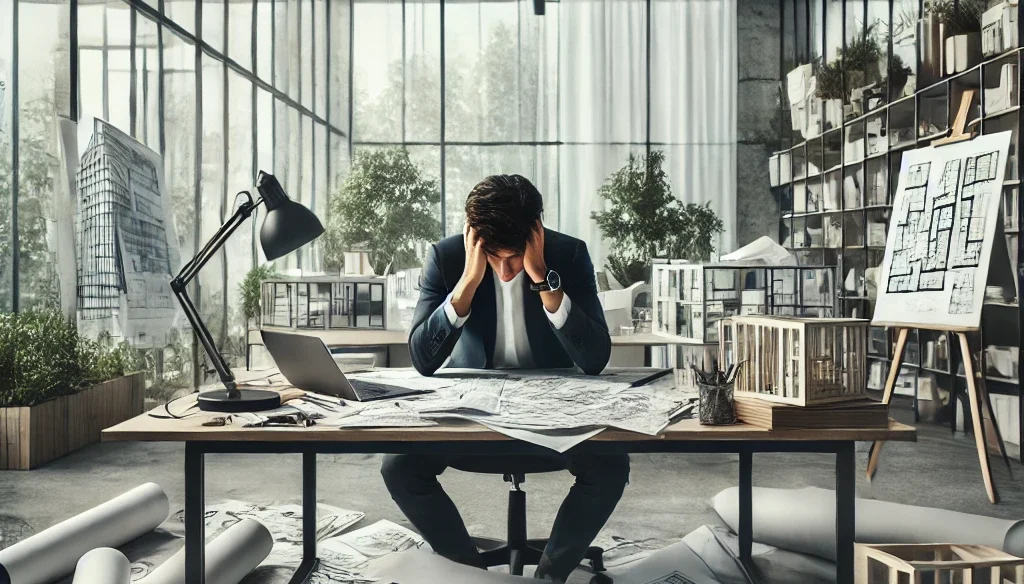Whether you’re building a new home or renovating an existing space, choosing between an interior designer and an architect is an important decision. While both professionals play essential roles in shaping functional, attractive spaces, their expertise, responsibilities, and approach to design differ. Understanding these differences will help you make informed choices for your project.
In this article, we’ll dive into the unique roles of interior designers and architects, the services they provide, and when you might need to hire one—or both—to achieve your goals.
What Is an Architect?
An architect is a licensed professional skilled in the design and planning of buildings. Architects are responsible for the overall structural design, ensuring that the building is safe, functional, and compliant with regulations.
The Role of an Architect
An architect’s job involves designing the exterior and interior structure of a building, focusing on space planning, structural integrity, and safety. Architects take into consideration factors such as building codes, zoning laws, and environmental sustainability to create designs that meet legal requirements while serving the client’s needs.
Architect Qualifications
Architects undergo extensive education and training. They must hold a degree in architecture, complete several years of supervised experience, and pass a licensing exam to become certified.
Key Responsibilities of an Architect:
Structural Design: Architects develop the framework of buildings, including foundations, walls, roofs, and windows, ensuring they are both functional and aesthetically pleasing.
Space Planning: Architects organize the layout of a building to optimize space usage, meeting the practical and regulatory needs of the project.
Compliance and Safety: They ensure all aspects of the building meet local building codes, zoning laws, and safety standards.
Construction Management: Architects often oversee the construction process, coordinating with contractors, engineers, and other professionals.

What Is an Interior Designer?
An interior designer focuses on the interior spaces of a building, creating aesthetically pleasing environments that improve functionality and enhance the user experience. Unlike architects, interior designers specialize in the finer details of a space, such as color schemes, furniture placement, and material selection.
The Role of an Interior Designer
Interior designers transform interior spaces to reflect the client’s vision, making them more comfortable, functional, and visually appealing. They work on projects ranging from residential homes to commercial offices, ensuring that the space meets the client’s needs both in terms of design and functionality.
Interior Designer Qualifications
Interior designers often hold a degree in interior design, and many seek certification through organizations like the National Council for Interior Design Qualification (NCIDQ). Although licensing requirements vary by location, experienced interior designers typically undergo extensive education and training in design principles and project management.
Key Responsibilities of an Interior Designer:
Aesthetic Planning: Interior designers choose color palettes, materials, finishes, and furnishings that complement the overall style of a space.
Furniture and Decor Selection: They carefully select furnishings and accessories to enhance the functionality and beauty of an interior.
Space Optimization: Interior designers plan the layout of rooms to improve traffic flow, lighting, and functionality.
Collaboration with Contractors: They work with contractors and suppliers to ensure their design concepts are executed properly.

Key Differences Between Architects and Interior Designers
Although architects and interior designers may collaborate on projects, their roles are distinct.
Focus and Specialization
Architects focus on the structural elements of a building—foundations, walls, roofs, and the overall framework. They ensure the building is safe and functional.
Interior Designers concentrate on the look and feel of the space. They make decisions regarding decor, furniture, lighting, and how the space is used by its occupants.
Project Involvement
Architects are involved from the beginning of a project, designing the structure and overseeing its construction. They are responsible for the technical aspects and ensuring compliance with regulations.
Interior Designers typically step in after the structure is in place, focusing on the finishes, furniture, and aesthetics that bring the space to life.
Regulations and Compliance
Architects are legally required to ensure buildings comply with local codes, safety regulations, and zoning laws.
Interior Designers must consider building codes for accessibility and safety but are not usually involved in structural compliance.
When to Hire an Architect
If you are building a new structure or making significant changes to an existing one, such as adding rooms or altering the layout of walls and floors, hiring an architect is essential. Architects handle the complex technical aspects of a project, ensuring that the building is structurally sound and meets all legal requirements.
Examples of Projects Requiring an Architect:
New Home Construction: Architects design the entire structure, from the foundation to the roof, ensuring it meets your needs and adheres to local codes.
Major Renovations: For projects involving load-bearing walls, changes to the building’s footprint, or structural modifications, an architect’s expertise is necessary.
When to Hire an Interior Designer
For projects focused on enhancing the interior space without making major structural changes, an interior designer is the right choice. Interior designers bring creativity and practicality, transforming spaces with color, furniture, and thoughtful design solutions.
Examples of Projects Requiring an Interior Designer:
Interior Makeovers: When your goal is to refresh your home’s look with new furniture, lighting, and decor, an interior designer can help.
Room Layout Changes: Designers can optimize your space by rearranging furniture or redesigning the layout to make your rooms more functional and appealing.
How Architects and Interior Designers Collaborate
On larger projects, architects and interior designers often work together to ensure the building’s structure and interior are cohesive. The architect designs the building, focusing on the structural elements, while the interior designer refines the interior layout, ensuring it reflects the client’s style and functionality needs.
Benefits of Collaboration:
Unified Design: A collaborative approach ensures the exterior and interior complement each other in style and functionality.
Efficient Project Management: Working together streamlines the construction process, avoiding delays and miscommunication.
Holistic Solutions: Architects and interior designers bring their unique skills together to create more creative and functional outcomes.

Real-World Example of Collaboration
At Chi’Livin, we’ve completed numerous projects where architects and interior designers collaborated to deliver stunning results.
Explore more of our collaborative projects here.
Conclusion
Understanding the difference between an interior designer and an architect is key when planning a project. For new constructions and structural changes, hiring an architect is essential to ensure safety and compliance. For aesthetic improvements and functional interior transformations, an interior designer is your go-to expert.
At Chi’Livin, we offer both architectural and interior design services, allowing us to provide comprehensive solutions for your project. Whether you need an architect, an interior designer, or a team of both, we’re here to help you bring your vision to life.
Ready to start your project? Contact us today to schedule a consultation.




